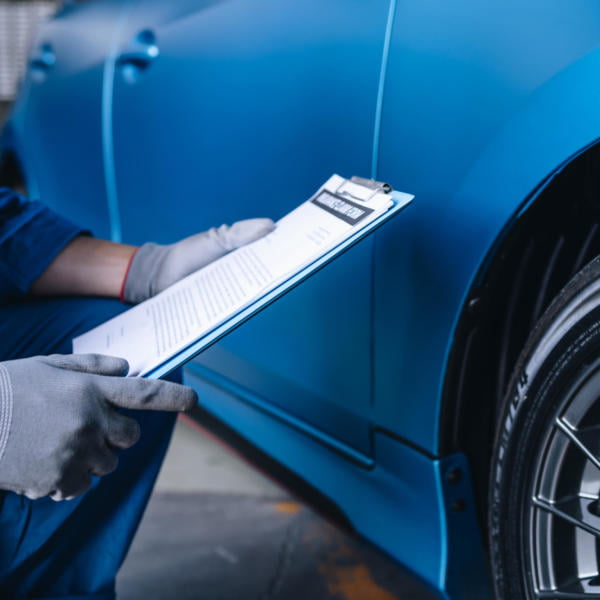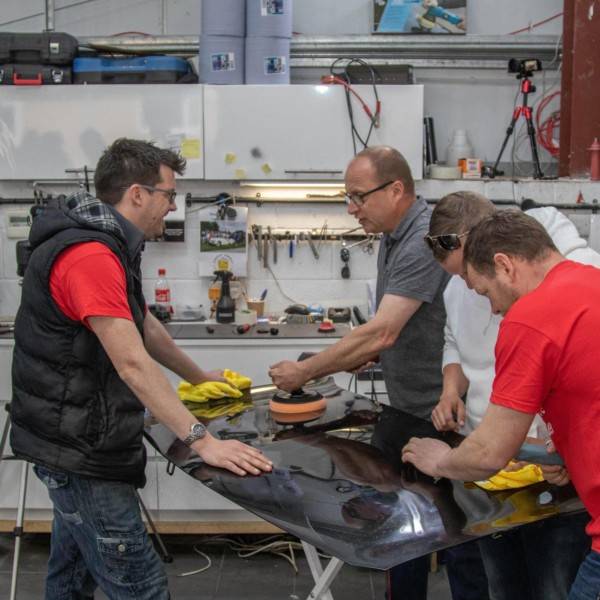Are plastic dressings important?
Satin sheened dashtops, glossy arches and shiny bumpers. Some like them, some prefer to leave these finishes clean and “natural”, but plastic dressings – especially on the interior – have been vilified in the past as silicone-heavy, greasy dust traps that turn matt or satin textured plastics into a shiny butter-pasted finish. But just because some products only achieve this doesn’t mean the genre should be written off as “bad”.

What is the most important job of a plastic dressing?
…Enhance the look of plastic textures?
…Darken the finish so they look newer?
…Stop the surfaces getting dusty and dirty?
…Protect them from discolouration?
All nice reasons for using a plastic dressing, but nothing “important” long term – perhaps with the exception of the last point, which has a link to this subject later. The important job they perform relates to an intrinsic part of the makeup of plastic called “plasticisers”. These are part of the plastic’s chemistry that keeps it slightly soft, allowing it to expand and contract, bounce back hard knocks, and remain in the shape it’s formed without shrinking. They allow the polymer chains of plastic to slide over each other more easily like a greased bearing, and the more plasticiser a plastic contains the more flexible it is.

Think of plastic as modelling clay. To make the clay workable, there is a water content to it (in this analogy, the plasticiser). Once all that water is dried out and evaporated, whether air drying, baked off, or just allowed to dry on a windowsill, you’re left with a very hard brittle surface which will break easily. Plasticisers are like oils which sit within polymer chains and keep everything… not soft, but pliable and able to expand and contract with heat. The clay isn’t a perfect metaphor, as there are other things in play, but it should help understand the role plasticisers take, and illustrate the effects of them being removed.
Over time these plasticisers within plastics, which feature as dash tops, switches, exterior trim, and softer plastics such as vinyl fabric, can break down and evaporate from the piece. This causes cracking, hardening of surfaces, and, yes, allows discolouration/oxidisation to occur. Again, over time – just as with clay and also accelerated with heat – these plastics will “dry out” with the plasticisers gassing off. This causes a few issues:
 Cracking plastic
Cracking plastic
As mentioned, plastics can turn brittle and hard, reducing their life span. Once the plasticisers have evaporated it’s not something you can just magically rub back in with a wonder-oil potions – that will only temporarily solve an issue as they’re not part of the chemistry any more, just a “filler”. If you get to it early enough you can make a difference, but generally, once cracking has started to appear and flexibility has gone, it’s game over and you need to replace or repair the surface.
 Shrinking and breakage
Shrinking and breakage
Vinyl fabric and wrap will crack and split too, not ideal and difficult to repair once it has gone in the case of fabric, and pointless in the case of wrap. Think back to when you’ve seen vinyl stickers on the side of a van or sign after several years in the sun; they shrink and crack around the edges, curling up and flaking. All the plasticers have gone from the material. In the case of fabric, it also reduces the material’s overall flexibility, making it hard, likely to crack, and less comfortable to sit on in the case of seat fabrics, and hardened, brittle, and shrunk if wrapped around trim pieces.
 Residue
Residue
Finally, the gassed plasticiser has to go somewhere, and after a hot day baking in the sun interior plastic outgas usually settles on the inside of the windscreen as a residue which is not that easy to wipe off. If you’ve ever experienced a smeary windscreen that’s otherwise apparently clean, it’s likely a coating of plasticiser on the surface that your window cleaner has loosened up and started to remove, but needs more work to complete. The settled plasticiser also becomes a condensation point and the glass can fog up easier in cold weather as a result.
So what do dressings do?
For the most part, they don’t “feed” plastics. A certain amount of water content will be absorbed back into drying plastic – and this will help – but mostly they form a barrier, both to block UV light from damaging and accelerating the oxidation process and help contain these plasticisers within the structure, preventing premature out-gassing. All the oils, perfumes, and shine agents are the show part. The real job it performs, or should, is to preserve what’s there already, plugging pores and protecting, ensuring the plastic remains chemically balanced. This is also why pre-cleaning is so important, it allows the dressings to get to where they need to without just sitting on the top of dirt and disguising it.
Not all dressings are designed to protect these plasticisers, and some cheap ones can actively contribute to faster deterioration, but with the right product applied regularly from day one, you can actively prevent them from degrading and preserve plastics for much longer.
So, back to the question – are they important?
Yes, as a preventative. From a preservation point of view, they help keep plastic surfaces looking new for longer and prevent outgassing and colour fading, and this is where their tangible value is from new car protection to any regular maintenance points of contact. Realistically this would take the form of a coating over just a dressing, but even short-term products, applied regularly can provide sufficient protection.
From a visual point of view, often most important to a customer, they enhance faded plastics for a while but they also help exterior surfaces stay clean, with the oils and silicones providing water repellency – but if plastic has degraded too much, it’s not a cure. You can have success with products such as, for example, Solution Finish to restore some life back into plastics in the long term, but that’s as close as you will get to a semi-permanent solution without regular maintenance when the damage has already been done.
![]()

 Cracking plastic
Cracking plastic Shrinking and breakage
Shrinking and breakage Residue
Residue


